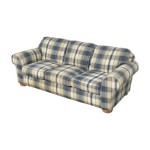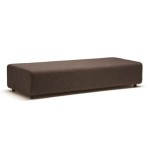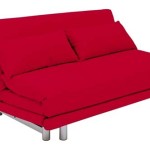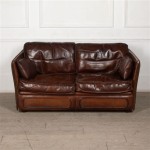How Much Fabric to Upholster a Sofa
Upholstering a sofa is a rewarding project that can breathe new life into old furniture or allow for customization of a new piece. A crucial aspect of this project is accurately estimating the required fabric. Underestimating can lead to project delays and mismatched fabric lots, while overestimating results in wasted material and expense. This article outlines the factors affecting fabric requirements and provides guidance on calculating needs.
Sofa Style and Dimensions
The style of the sofa significantly impacts the amount of fabric required. A simple, straight-lined sofa will naturally require less fabric than a more complex design with curves, tufting, or attached cushions. Detailed designs necessitate extra fabric for pattern matching and creating the necessary folds and gathers. Accurate measurements are essential for any sofa style. Measure the height, width, and depth of the sofa, including the arms and back. For sectionals, treat each section as a separate piece and calculate accordingly.
Fabric Properties
Fabric properties play a vital role in determining the total yardage. Patterned fabrics typically require more yardage than solid fabrics due to the need for pattern matching. Large-scale patterns, especially those with a defined repeat, demand even more fabric to ensure the design aligns correctly across the sofa's surfaces. Fabric width also influences the required yardage. Narrower fabrics necessitate more length to cover the same area compared to wider fabrics. The fabric's directionality, such as a noticeable nap or pile, must be considered. All pieces must be cut in the same direction, which may increase the total fabric needed.
Adding Extra for Seams, Pattern Matching, and Potential Errors
Accurate measurements and careful calculations are crucial, but it's equally important to include a buffer for unforeseen circumstances. Add extra fabric to account for seam allowances, typically half an inch to an inch per seam. For patterned fabrics, add extra yardage for matching, depending on the complexity and repeat size of the pattern. Finally, include a contingency for potential errors during cutting or unforeseen issues with the fabric. This extra material provides peace of mind and can be invaluable in the event of mistakes.
Using a Furniture Template or Online Calculator
For those new to upholstery, creating a furniture template can be a valuable tool. Using inexpensive materials like muslin or paper, create a mock-up of the sofa's various sections. This allows for visualization of the fabric layout and helps identify potential issues with pattern matching or fabric directionality before cutting the actual upholstery fabric. Several online calculators are available to estimate fabric needs. These calculators generally require inputting sofa dimensions and fabric properties. While these can provide a starting point, they may not account for unique design elements or complex patterns. Therefore, combining online calculators with careful measurements and consideration of fabric properties provides a more accurate estimate.
Consulting with an Upholsterer or Fabric Supplier
For complex sofa designs or when working with expensive fabrics, consulting with an experienced upholsterer is highly recommended. They possess the expertise to accurately assess the fabric requirements and can provide valuable advice on fabric selection and potential challenges. Fabric suppliers can also be a valuable resource. They often have experience with various fabric types and can offer guidance on estimating yardage based on the specific fabric chosen. They can also advise on fabric availability and whether the chosen fabric is suitable for upholstery.
Checking for Fabric Flaws and Dye Lots
Before beginning the upholstery project, thoroughly inspect the fabric for any flaws or imperfections. This includes checking for color consistency, especially with large pieces of fabric. Verify that all fabric purchased belongs to the same dye lot. Dye lots represent batches of fabric dyed at the same time. Slight variations in color can occur between different dye lots, leading to noticeable discrepancies on the finished sofa. Reputable fabric suppliers will clearly label dye lots, making it easy to ensure consistency. If insufficient fabric from the same dye lot is available, consider alternative fabric choices or carefully plan the layout to minimize the impact of color variations.
Proper Fabric Storage
Once the fabric is acquired, proper storage is essential to maintain its quality before use. Store the fabric in a clean, dry environment away from direct sunlight or extreme temperatures. Avoid folding the fabric excessively, as this can create creases that are difficult to remove. Ideally, roll the fabric onto a tube or loosely drape it over a padded hanger to prevent wrinkles. Proper storage ensures the fabric remains in optimal condition for the upholstery project.

How To Estimate Fabric Yardage For Upholstery

How Much Fabric Do You Need For Reupholstering Upholstery Diy Sofa

Sofa Fabric Estimator Calculator How Much To Cover A

How Much Fabric Do I Need The Chesterfield Manufacturer

How Much Upholstery Fabric Do I Need Just Fabrics

How To Calculate The Amount Of Fabric For Upholstery And Furniture Waist Eden Textile Blog

Fixr Com Cost To Reupholster Couch Sofa Upholstery

Fabric Yardage Chart For Furniture Upholstery A Knol By K Butler Reupholster Reupholstery

How Much Fabric Do I Need For My Upholstery Project Kim S

How Much Fabric Do I Need A Most Common Question Canvas Etc








